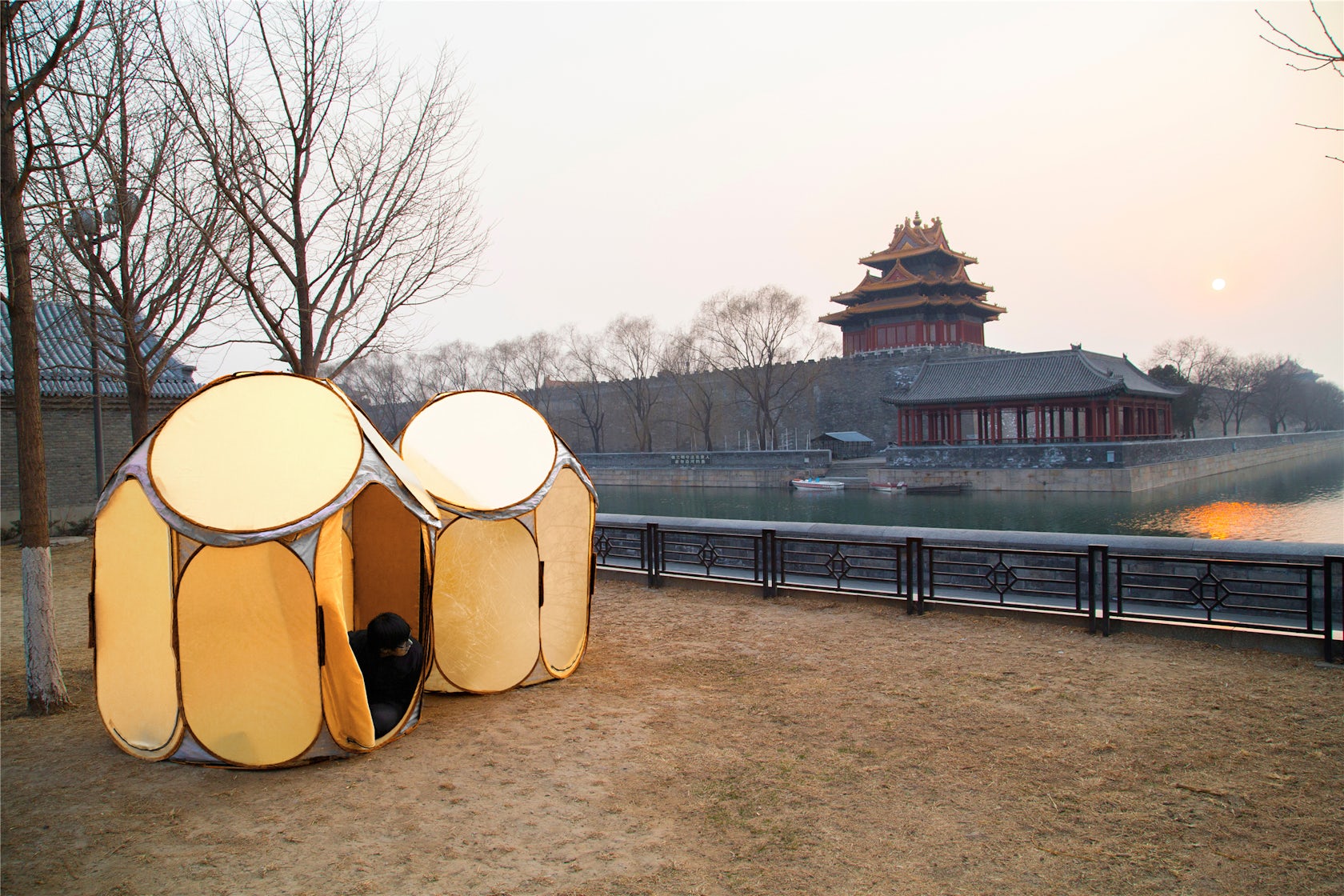Architects: Want to have your project featured? Showcase your work by uploading projects to Architizer and sign up for our inspirational newsletters.
In many societies, architecture is inherently portable. Nomadic communities around the world have developed unique residences and other structures to accommodate their mobile ways of life, designing ingenious solutions to diverse environmental challenges or societal needs. From yurts on the steppes of Central Asia, to tipis dotting the American plains, to Tuareg tents of the Sahara Desert, many of these design solutions were devised and refined centuries ago.
Yet in modern industrial communities, nomadic lifestyles are much less common. As a result, the need for portable architecture in some places has all but disappeared. The materials used in most modern homes are not suitable for mobile structures, and instead have led to increasingly uniform domestic architecture. However, more and more individuals are abandoning suburban conformity and embracing nomadic lifestyles within industrial communities, or otherwise turning to portable residences out of necessity. Fortunately, there are many innovative architects willing to meet their needs.
A new tradition of portable architecture, especially domestic architecture, is beginning to emerge, one that combines modern materials and post-industrial aesthetics with ancient design solutions and practices. Some projects are directly influenced by nomadic architecture, while other projects address entirely new problems. Yet all of these designs, forced to depart from convention and to rethink the fundamentals of static design, offer dazzling new opportunities for architecture, and with it, for ways of living.

© Studio of Tejlgaard & Jepsen

© Studio of Tejlgaard & Jepsen
Dome of Visions by Studio of Tejlgaard & Jepsen, Copenhagen, Denmark
Building off the legacy of R. Buckminster Fuller’s geodesic domes, Tejlgaard & Jepsen’s Dome of Visions functions simultaneously as a greenhouse, performance space and vehicle for social commentary. Designed as a foil to contemporary construction projects in the city, this simple, portable structure – consisting of a wooden frame and polycarbonate shell — suggests an alternative trajectory for Danish architecture.

© X Architects

© X Architects
Houseboat – ‘O’ DE SQUISITO by X Architects, Dubai
The project, ‘O’ De Squisito, by X Architects, belongs to a longstanding tradition of mobile architecture — house boats. The structure resembles an archetypal modern home, but has the added benefit of being able to float along the coast of Dubai, its transparent glass façade providing stunning views of the city and the sea beyond.

© Höweler + Yoon Architecture LLP

© Höweler + Yoon Architecture LLP

© Höweler + Yoon Architecture LLP
UNI by Höweler + Yoon Architecture LLP, New York, N.Y., United States
Höweler + Yoon’s project UNI (short for Urban Neighborhood Institution) offers a mobile solution for community spaces in urban environments. Functioning as a portable library, the project lacks any structural elements, distilling a library down to two basic elements: seats and shelves. What the design lacks in stability, it makes up for in flexibility, portability, inclusivity and accessibility.

© Taalman Koch Architecture
Small Skyscraper by Taalman Koch Architecture, Switzerland
Small Skyscraper, a collaboration between Taalman Koch Architecture and the artist Chris Burden, takes a humorous approach towards the limits of architecture and the laws governing architectural practice. Designed to circumvent building regulations in Los Angeles, Small Skyscraper is a four-story structure which does not require a building permit and is lightweight and portable. The project suggests the constrictive effects of architectural regulations while demonstrating the potential for working outside of them.


BLOB vB3 by dmvA
The design for Blob vB3 was also born out of deliberate attempts to sidestep building regulations. Intended as a comprehensive, yet portable, residential structure, the Blob makes efficient use of space with built-in furniture and utilities. Its distinct (and comical) appearance makes the Blob both pleasant and accommodating: the structure’s curved walls make the most of the house’s limited interior space.

© Architecture for a Change (A4AC Architects)

© Architecture for a Change (A4AC Architects)
The Transition unit by Architecture for a Change, Pretoria, South Africa
The Transition unit uses design principles for portable architecture to address housing needs in underprivileged communities. Intended as a temporary home for those transitioning from informal settlements to properly designed residences, Transition Units are prefabricated structures with an extremely simple design. The project prioritizes efficiency, flexibility and an economy of resources in an attempt to make Transition Units accessible to as many households as possible.

© People’s Architecture Office

© People’s Architecture Office

© People’s Architecture Office
Pop-up Habitat by People’s Architecture Office, Beijing, China
The Pop-up Habitat, by the People’s Architecture Office, looks more like a tent than a home. It fulfills only the most basic criterion of a shelter, comprised of nothing but walls made from repurposed materials. Yet the design takes full advantage of modular design and its potential for infinite scalability. While a single Pop-up Habitat resembles a primitive, portable shelter, the structure may be attached to other Pop-up Habitats, enabling users to create larger and more complex forms. The project embodies an ostensible contradiction in architecture: the smaller and more modest the design, the greater the possibilities.
Architects: Want to have your project featured? Showcase your work by uploading projects to Architizer and sign up for our inspirational newsletters.




